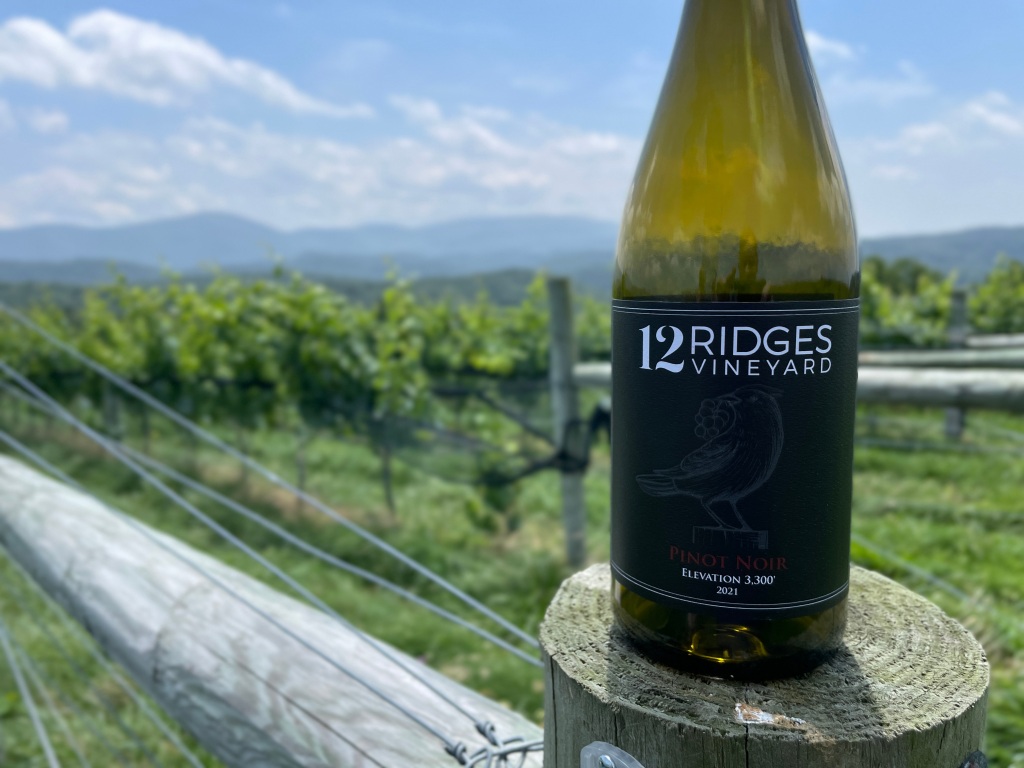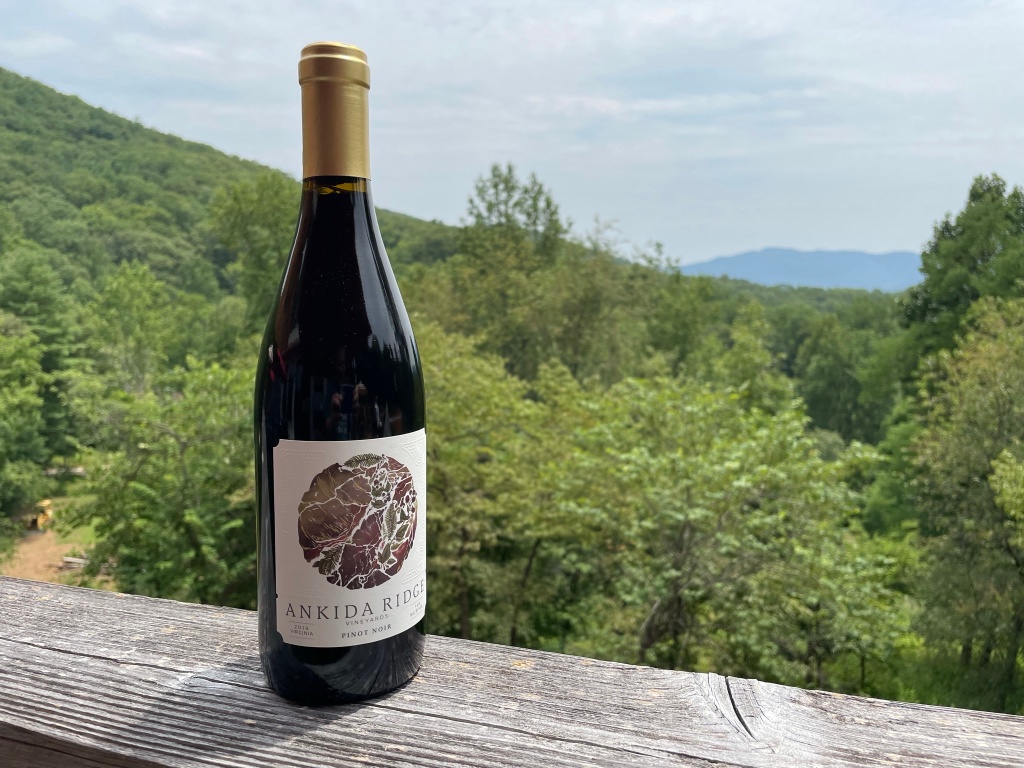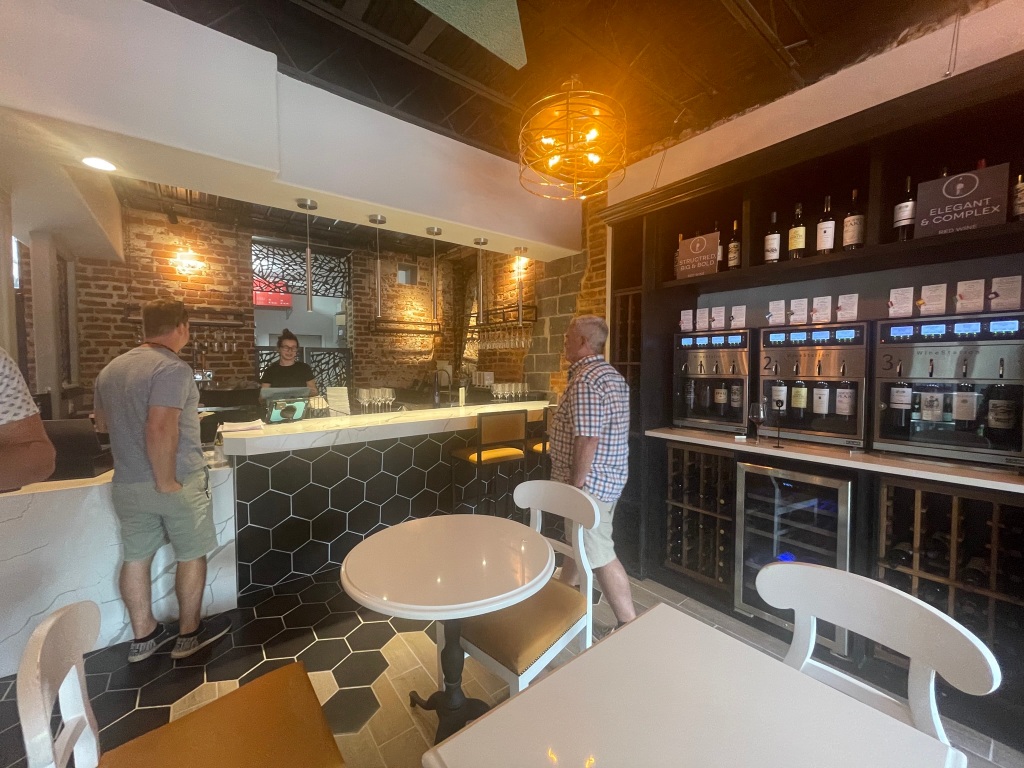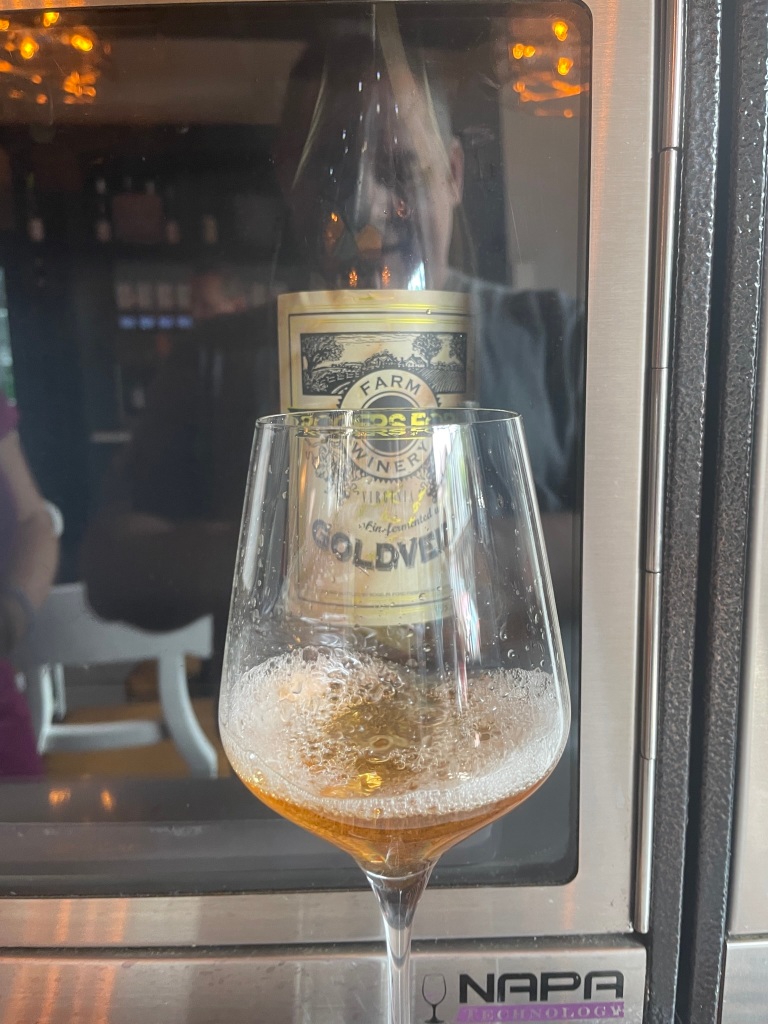Standing on the deck of her tasting room, Ankida Ridge Farm & Vineyards owner Christine Vrooman gestured at the scenery before her. “We have a little valley here and a little valley there, and cold air moves down them to the bottom of the mountain. We’ve never been touched by spring frost, and our disease pressure is low since we never get morning dew. I could have called it Utopia Ridge.”
The benefits Christine described are the main reasons winemakers around the world prize mountaintop sites. While farming high, steep slopes is difficult, the grapes’ access to cool temperatures and direct sunlight gives them the ability to produce complex, high-quality wine.
Ankida is one of Virginia’s first high mountain vineyards, but it’s not alone. While there’s no specific definition of what constitutes ‘high altitude’, a handful of Virginia wineries including 12 Ridges Vineyard (highest elevation 3,300 feet), Rock Roadhouse (3,000 feet), Ankida Ridge (1,800 feet), Fox Meadow (1,800 feet), Stone Mountain (1,750 feet) and Hazy Mountain’s Little North Mountain Vineyard in Swoope (1,700 feet) easily qualify for this prestigious club.

The Advantages (and Tradeoffs) of High Altitude
Christine’s description of how frosty air bypasses her vineyard isn’t an exaggeration. The phenomenon that allows mountaintop vineyards to avoid frost is called a ‘thermal belt,’ and is one of the most important advantages of growing at higher altitudes.
Cold air is dense, and like water, flows to the lowest point available. The influx of cold air displaces lighter warm air, which rises. This results in a narrow zone where the temperature is warmer than the air above and below it.
As Ankida is 1,000 feet higher than the bottom of the valley the morning cold air passes through the vineyard, but like an unwanted guest is shown the way out. This lets the vines stay within a consistent temperature range, one that is conducive for growing grapes.
“Mornings start off warmer than the town below, but in the afternoon, the vineyard is typically 5-15 degrees cooler than the surrounding lower regions. Even in a hot summer, the temperature almost never hits 90 degrees,” Christine explained.

Higher altitude vineyards have several other advantages. Grapes grown in such locations are subjected to stronger UV rays, resulting in thicker skins that provide more intense color and bolder tannins.
Strong winds also mean mountaintop vineyards have less disease pressure, as good airflow keeps the canopy free from moisture.
But as with nearly everything, there’s a tradeoff.
As the second highest elevation vineyard on the East Coast, 12 Ridges is an especially cool climate site. During a tour of their vineyard adjacent to the Blue Ridge Parkway, winegrower Josh Seaman discussed how bud break doesn’t even start until late April. While this puts them past much of the ‘danger zone’ of a spring frost, being 3-4 weeks behind the rest of the state elevates their risk to hurricane season.
Cool weather sites must also juggle the tradeoff between ripeness and acidity. Heat ripens grapes on the vine but simultaneously causes their acidity to drop. This means 12 Ridges’ fruit struggles to ripen even into September. Windy conditions also make fruit set more difficult.


Virginia Wines That Showcase High Altitude Terroir
The cool yet consistent temperature range found at higher altitudes also allows for different options in the vineyard. It’s not a coincidence several of these wineries are the state’s biggest producers of pinot noir, a wine so notoriously difficult its nickname is “the heartbreak grape.”
“One of the things that drew me to pinot is it has a shorter growing season, so it’s ideal for up here in the mountains,” said Stone Mountain owner Deanne Gephart. “Now that we have pinot we finish earlier. No matter the bear pressure or what crazy weather happens, our grapes are off the vine.”
While ripening fruit in cooler temperatures can be challenging, the opportunity to create wines with high acidity is too good of an opportunity for most winemakers to pass up. Acidity makes wines crisp, food friendly, and ageable, and is increasingly difficult to attain in an era of global warming.
Acidity is also one of the key components for sparkling wine. Not coincidentally, many high altitude wineries focus on chardonnay and pinot noir, Champagne’s most famous grapes. Ankida already makes both a Blanc de Blancs and Blanc de Noirs, and 12 Ridges plans on making sparkling wine in the future.



Virginia has a long roster of high altitude wines, so no one list can do it justice. Nevertheless, here are a few favorites:
- 12 Ridges 2021 Chardonnay: With high acidity and surprising weight, this wine has light apple notes reminiscent of a golden delicious. Its crispness and minerality makes it more Chablis than Burgundy in style. This is possibly the best chardonnay I’ve had all year.
- Ankida Ridge 2022 “Verday”: How does one pick a favorite at Ankida? You don’t; but this wine earns points for being the most ‘fun’ wine of their lineup. Their “Verday” is a light, refreshing, pinot-based wine with the same zestiest of a Vinho Verde.
- Fox Meadow 2022 Pinot Grigio: Comparing this to the stellar 2021 Pinot Grigo (best in class at the Atlantic Seaboard Wine Association Competition) is a tough challenge, but this vintage may prove its equal. Notes of honeydew and grapefruit makes this an easy-drinking sipper.
- Hazy Mountain 2019 Pinot Noir: A great example of a grape rarely seen in Virginia. Aged with French oak (30% new), this pinot is more reminiscent of Old World pinots than those found on the West Coast. Bright fruit (especially cherry), with a firm tannin structure.
- Stone Mountain 2020 Stainless Steel Chardonnay: While I’ll have to wait for Stone Mountain’s pinot (2023 is their first harvest!) this crisp, balanced chardonnay with notes of citrus will tide me over.
















